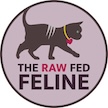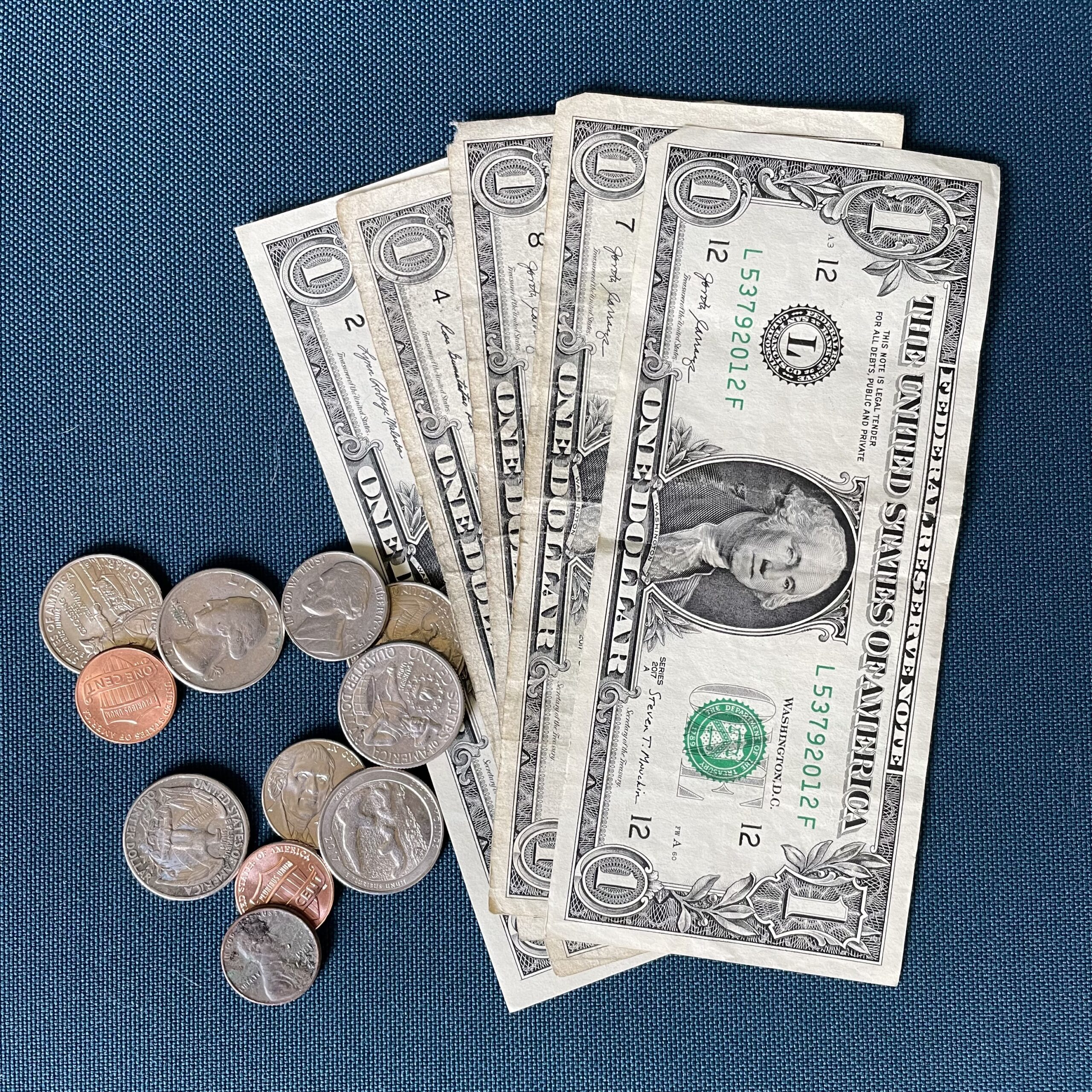Who isn’t looking to cut costs these days? I know that I am. Raw feeding is typically less expensive than feeding a canned food diet, but there are some simple ways to cut costs and stretch your cat’s food budget even further. I’m going to share some money saving tips that I have found as a long time raw feeder, while still keeping it easy.
cost and ease
When it comes to the cost of raw feeding, how easy it is and how much it costs have a direct relationship. The more time and work you put in, the more money you can save. The more it costs, the easier it is. You pay for the convenience of being able to just scoop and serve with pre-made foods.
Doing a fully DIY diet will typically be the cheapest way to make raw food. Many raw feeders who have a lot of cats feed this way. But not everyone has that kind of time or interest, so my goal is to strike a balance between cost and ease.
Think of my suggestions here as a combination of keeping it relatively easy and budget conscious.
I’ll add a caveat that the cost of meat where you live is the biggest determinant of the overall cost of raw feeding. I’m in the US, so these suggestions will be based on my experiences living here. The US is a big country though, so the cost of meat will still vary depending on where you live within the US as well.
Cutting costs when sourcing
-Shop sales. I cannot stress this one enough. You gotta be a savvy shopper. If your local grocery store has a rewards program, join it. I once saved over $18.00 dollars on a package of boneless sirloin tip steak as a rewards member of my local grocery store!
-Warehouse stores. Costco is a popular place to find more affordable meats.
-Some online raw food suppliers have rewards programs. Join them. Every bit helps.
-Asian markets. If you have a local Asian market, you have to go check it out. They are a serious treasure trove for organs and meat on the cheap. Bonus: you can usually find quail eggs and whole semi dressed quail as well!
-Raw feeding co-ops. See if there is a raw feeding co-op near you. These are usually dog focused groups, so you may have to look on dog sites to find them. You can save a ton of money on meat this way. The group places a collective order to reap the benefits of bulk pricing and shipping. The one where I used to live placed a monthly order and had a designated local pick up spot.
-Farmers markets. My local market has several regular meat suppliers. I can get bison, pork, beef, chicken, and eggs direct from local farmers. You can ask them about organs that they might have, but not otherwise bring to market. They are usually happy to find someone who wants those items.
-Hunters. People who hunt often want to clear out their freezers of last year’s meat before the next hunting season. They cannot legally sell the meat, but they can give it away. Just be sure that it has been frozen the whole time and inspect it when you get it. “When in doubt, throw it out” is always a good rule when it comes to food safety.

Cost cutting tips
-Having a big freezer can really help because when you find a great sale, you can stock up. You can order more at once to minimize shipping costs when shopping online suppliers. Not everyone has the space or resources to have a freezer like this, but if you do, know that those of us who don’t are extremely jealous.
-Boneless meat typically costs more per pound than bone-in meats. However, unless you are going to use the bones to make bone broth (Hazel doesn’t like it) or have a dog that can use them (I don’t), you are paying for the weight of the bones. I think it ultimately makes more money saving sense to pay the price for the boneless meat since you will use all of it. I don’t want to pay for something that I can’t use. And de-boning meat is a serious pain in the a$$.
-Feed budget friendly proteins more heavily in the rotation to cut costs. You don’t have to feed exotic meats. It can be fun to offer those on occasion, but it is not necessary to do so. Pork is the cheapest meat for me and is well loved by many cats. It is certainly a favorite of Hazel’s. Pork is especially great for our raw fed felines given its thiamin content.
You want to feed at least three proteins in a raw diet. In the US, common meats found in grocery stores and meat markets include pork, beef, chicken, and turkey, so these are often the cheaper ones to feed in your rotation.

-Use muscular organs to help offset the cost of the meat! You can add up to 20-25% of the overall meat content as muscular organs, even when using completers. Muscular organs include hearts, gizzards, tongue, lungs, tripe, and uterus. Chicken hearts and gizzards can be found in most grocery stores, even at Walmart, and are typically less expensive than meat. They are great to include for nutrient and texture variety and help make the meat budget stretch further.

Cutting costs with omega-3s
Omega-3s are one of the most important “extras” to include in your cat’s diet. You don’t have to buy oil though, which can be expensive. Canned oily fish, like sardines, are a cheap and easy way to provide the needed omega-3s in the diet. Try and use the ones that have no added salt and are in water. If you can only find the ones in oil, make sure it is unflavored oil and rinse before using.
Your cat only needs 1 sardine per week. You can offer it at one time and have a “Sardine Saturday” routine or break it in pieces and offer a piece over 2-3 days. Since you only need one per week per cat, you can freeze the remaining sardines to use later.

Alnutrin
Using a completer is a great way to keep raw feeding easy. Alnutrin is the most wallet friendly of the completers available in the US. One of the reasons it is less expensive than EZComplete or TCFeline is because it does not include whole foods other than egg yolk. You have to add liver and a source of omega-3s with Alnutrin, whereas both of those things are included with EZComplete and two of the versions of TCFeline.
EZComplete and TCFeline add approximately $3.00 per pound to the total cost of the food. Alnutrin with Eggshell adds approximately $1.04 per pound to the overall cost (this includes shipping). Liver tends to be pretty cheap and if you use canned sardines as your source of omega-3s, you can make complete raw food very reasonably.
I can feed Hazel for under $1.00 per day using Alnutrin with Eggshell and pork, beef liver, and canned sardines. Not too bad.

pros and cons
Now the potential downside for some folks will be that you have to deal with liver when you use Alnutrin. Is it less work than a fully DIY PMR based diet? Absolutely. Does it require a bit more work than using EZComplete, for example? Yep, it does. This is where you strike a balance between ease and cost to make even more affordable raw food.
On the plus side, once you get used to using liver, it can be a fun and satisfying way to make your cat homemade food without getting too overwhelmed. You can also rotate the livers used for more nutrient variety. Beef and chicken livers tend to be the easiest (and cheapest) to find in grocery stores. There are liver options from other animals at Asian markets and Halal butchers that you can use, too.
If your cat has any food sensitivities or allergies, Alnutrin tends to be a nice option for that reason as well. You have control over the meat, liver, and omega source. Alnutrin also has an egg-free version for those that need it.
To note, there are several versions of Alnutrin to be aware of. The one I use with Hazel is Alnutrin with Eggshell. Eggshell provides the needed calcium in the diet for an adult cat. This version cannot be used with growing kittens. There is a different version that is used with ratio bone-in grinds that is great for kittens.
What are some money saving tips that you have found as a raw feeder? Share in the comments below!


